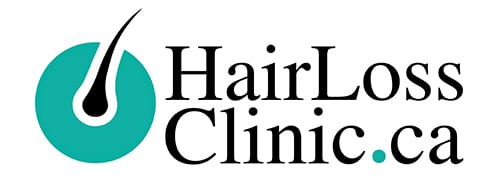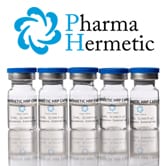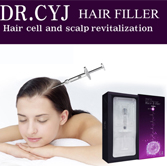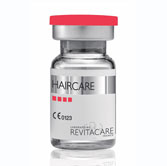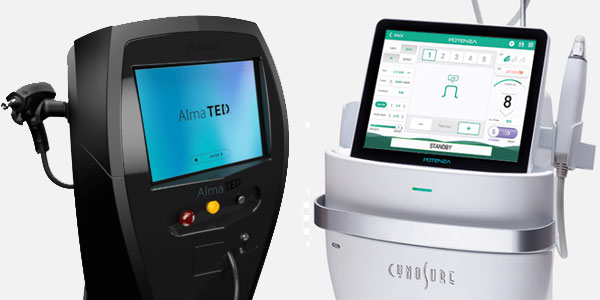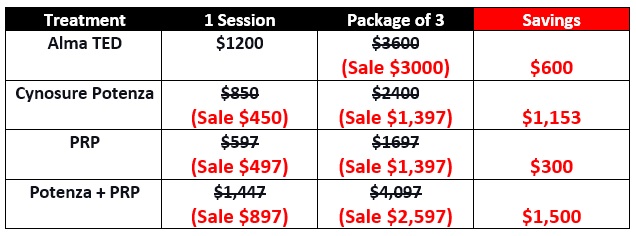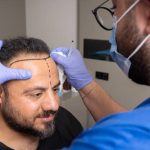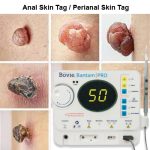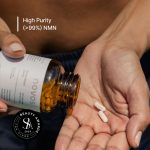August 3, 2023 By simonw Comments are Off
Table of Contents
Alma TED vs Cynosure Potenza + PRP for Alopecia: Which is Better?
Part 1: The Complex World of Alopecia
Hair loss, or alopecia, is a widespread condition as diverse as the individuals it affects. Its presentation varies from localized patches, Alopecia Areata, to a more extensive hair loss scenario seen in Androgenetic Alopecia, also known as male or female pattern baldness.
Delving into the Causes
Alopecia isn’t just a product of one single cause but rather an interplay of various factors. Genetic predisposition forms a significant component of this equation, but hormonal influences, particularly the androgens, also play a vital role. Other triggering elements may include autoimmune reactions where the body mistakenly attacks its hair follicles, nutritional deficiencies, psychological stress, or underlying medical conditions, particularly those impacting the thyroid gland.
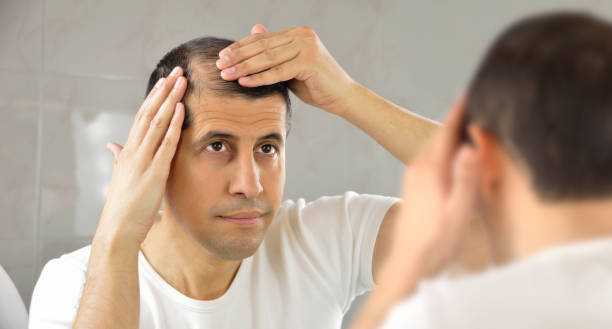
The Widespread Impact of Alopecia
While alopecia is not life-threatening, its repercussions extend beyond the physical. The psychological and emotional toll can be significant, leading to a decline in self-esteem, increased levels of stress, and in some cases, serious depression. Consequently, searching for effective hair loss treatments has become an imperative medical and scientific study area.
Part 2: A Glimpse into Alma TED
Alma TED (Thermal Electric Delivery) emerged as a pioneering technology developed by Alma Lasers. It has been uniquely designed to treat various dermatological conditions, including alopecia, offering a novel approach to hair regrowth.
Unpacking the Alma TED Mechanism
The functioning of Alma TED revolves around the delivery of thermal electric energy directly into the scalp’s dermal layer. The process generates heat that stimulates blood flow, effectively carrying nutrients to the hair follicles and creating an environment conducive to regrowth. What sets Alma TED apart is its non-invasive nature and minimal side effects, making it a comfortable and easy treatment option for patients.

Clinical Trials and Effectiveness of Alma TED
Clinical trials conducted using Alma TED have shown promising results. Patients with different types of alopecia reported significant hair regrowth after undergoing a series of treatments. Moreover, the treatment’s non-invasive nature and minimal side-effect profile make it an attractive choice for many individuals with hair loss.
Part 3: Harnessing the Power of Cynosure Potenza
Cynosure Potenza represents another significant leap in the dermatological world. This versatile, customizable microneedling device is adept at treating many skin conditions, with alopecia being one of them.
Understanding the Cynosure Potenza Functionality
Cynosure Potenza employs a blend of traditional microneedling with radiofrequency energy. Microneedling involves:
- The creation of micro-injuries in the skin.
- Triggering the body’s natural healing response.
- Leading to increased collagen production.
With its RF technology, Potenza ups the ante by delivering energy to the target areas, amplifying the healing response, and directly stimulating the hair follicles.
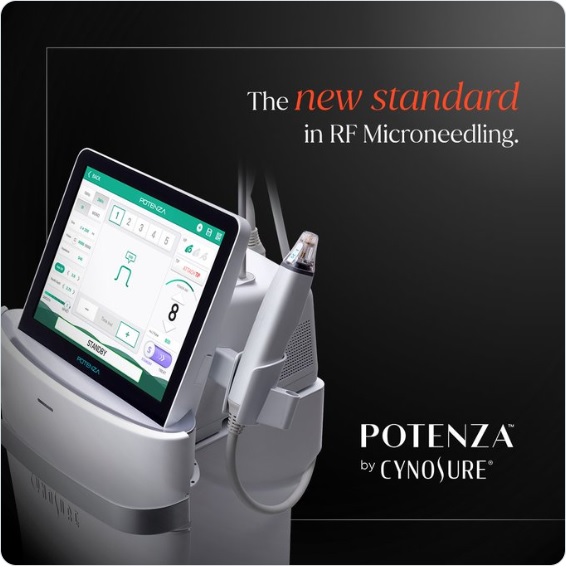
Safety and Side Effects of Cynosure Potenza
Cynosure Potenza is generally considered safe as a treatment method with a few manageable side effects. In some instances, patients may notice a slight reddening or swelling of the skin, generally resolving within a few hours, or extending up to a few days. It’s non-invasive and typically painless, making it a convenient option for many patients.
Part 4: PRP: A Biological Solution
Platelet-Rich Plasma (PRP) therapy harnesses the body’s biological resources to stimulate growth and healing. It involves drawing a patient’s blood, processing it to concentrate the platelets, and re-injecting it into the areas of hair loss.
The Science Behind PRP
PRP therapy operates on the principle that the body’s platelets are a rich source of growth factors, which are proteins responsible for various growth and healing processes. When these growth factors are condensed and introduced to the scalp, they have the potential to trigger hair follicles, thereby facilitating hair growth.
Research Evidence Supporting PRP in Alopecia
PRP’s effectiveness in treating alopecia has been demonstrated in numerous studies. These studies suggest that PRP therapy can increase hair thickness, stimulate the active growth phase of the hair cycle, and improve hair density. It’s relatively safe, with minimal side effects, usually limited to mild discomfort and temporary redness at the injection site.
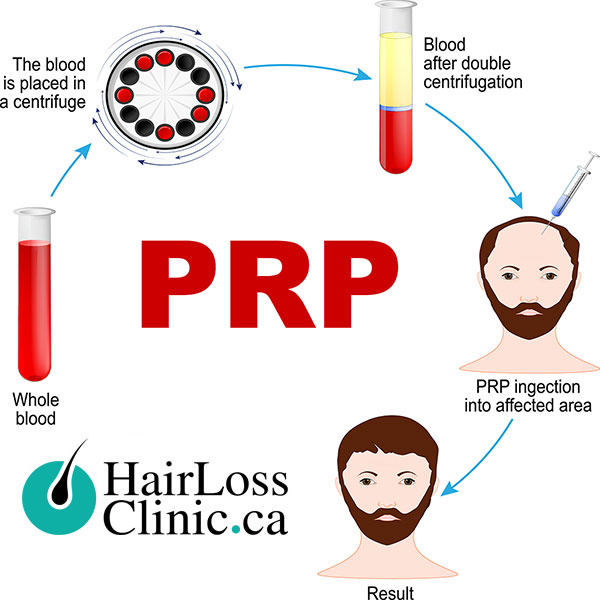
Part 5: Cynosure Potenza + PRP: A Dynamic Duo
When combined, Cynosure Potenza and PRP therapy can create a compelling treatment for alopecia. The amalgamation of these two treatments serves to complement and enhance the benefits of each, providing a comprehensive approach to hair loss.
A Deep Dive into Cynosure Potenza + PRP Combination
With its microneedling capability, the Potenza device creates a more receptive environment for PRP therapy. The micro-injuries allow for deeper penetration and better absorption of the PRP, making the therapy more effective. Additionally, the combination of Potenza’s RF energy and the growth factors within the PRP can accelerate the stimulation of the hair follicles, potentially leading to quicker and more robust hair growth.
Practical Considerations and Results
Patients undergoing combined Potenza and PRP treatments typically report higher satisfaction rates. Though the treatments, though involving minor discomfort, are largely tolerable and have manageable side effects. Moreover, the results—thicker, denser hair—are often visible after a few sessions, contributing to its growing popularity.
Part 6: Weighing the Options: Alma TED vs Cynosure Potenza + PRP
Alma TED and Cynosure Potenza + PRP have shown substantial promise in finding an effective solution for alopecia. However, a detailed examination reveals a slight advantage for the Potenza + PRP combination.
Verdict: The Edge Goes to Potenza + PRP
The edge given to Potenza + PRP is largely due to its synergistic effect. The unique blend of microneedling with PRP doesn’t merely enhance the absorption of the growth factors but provides a multi-modal approach to tackle hair loss. This combination ensures that the hair follicles are stimulated from different angles, increasing the chances of successful hair regrowth.
Nonetheless, it’s pivotal to comprehend that the effectiveness of the treatment can considerably fluctuate based on personal attributes, including the type and degree of hair loss, overall health condition, and lifestyle factors. Thus, while Potenza + PRP may take the trophy in this comparison, it’s always advisable to consult a dermatologist or hair loss specialist when deciding on treatment for alopecia. Treatment plans must be personalized and reflect each patient’s unique needs and circumstances.
Pricing
Q&A
Alma TED
What is Alma TED, and how does it work?
Alma TED (Thermal Electric Delivery) is a technology developed by Alma Lasers to treat various dermatological conditions, including alopecia. It delivers pulses of thermal electric energy directly to the dermal layer of the scalp, generating heat that stimulates blood flow and provides nutrients to the hair follicles to encourage regrowth.
Is Alma TED painful?
Alma TED is generally considered a painless treatment. Since it’s a non-invasive procedure, most patients report little discomfort during the session.
How long does it take to see results with Alma TED?
Results with Alma TED vary based on the individual’s specific hair loss condition, overall health, and the number of treatments received. However, many patients start to see improvement within a few weeks after the first treatment.
Are there any side effects associated with Alma TED?
Alma TED is a non-invasive treatment with minimal side effects. Some patients may experience mild scalp redness or warmth immediately following treatment, but these effects usually subside within a few hours.
Is Alma TED suitable for all types of alopecia?
Alma TED has been used to treat various types of alopecia, showing promising results. However, the effectiveness of the treatment can depend on the specific type and severity of hair loss. A consultation with a healthcare provider is necessary to determine the suitability of Alma TED for an individual’s specific condition.
Cynosure Potenza
What is Cynosure Potenza, and what is its function in treating alopecia?
Cynosure Potenza is a microneedling device that incorporates radiofrequency energy. It creates micro-injuries in the scalp, stimulating the body’s natural healing response and hair follicle activity. The addition of radiofrequency energy amplifies this response, aiding in hair regrowth.
How many Cynosure Potenza treatments are needed to see results?
The number of treatments required will vary based on individual factors, including the extent and type of hair loss. However, many patients begin to see results after 3-4 sessions, spaced about 4-6 weeks apart.
Are there any side effects with the Cynosure Potenza treatment?
Side effects from Cynosure Potenza treatment are typically mild and transient. They may include redness, swelling, or minor discomfort at the treatment site, but these generally resolve within a few days.
Is the Cynosure Potenza treatment painful?
While some patients report minor discomfort during microneedling, many find the treatment tolerable. Topical anesthetics can be used to improve comfort during the procedure.
Can Cynosure Potenza be used in conjunction with other treatments?
Yes, Cynosure Potenza can be combined with other treatments. One such combination is with PRP (Platelet-Rich Plasma) therapy, where the microneedling allows for better absorption of the PRP, potentially enhancing the results.
Platelet-Rich Plasma (PRP)
What is PRP therapy, and how can it help with alopecia?
PRP therapy consists of obtaining a blood sample from the patient, refining it to enrich the platelets, and then re-administering it into the regions suffering from hair loss. The platelets release growth factors that can stimulate hair follicles and promote hair growth, thus aiding in the treatment of alopecia.
How many PRP treatments are needed to see results?
Typically, PRP treatments are needed to see noticeable hair regrowth. The precise count can differ among individuals, but many patients typically start with 3-4 treatments, each scheduled approximately a month apart, followed by upkeep sessions every 3-6 months.
Are there any side effects of PRP therapy?
PRP therapy is generally safe with minimal side effects. Some patients may encounter mild discomfort, reddening, or minimal inflammation at the injection sites, but these symptoms generally dissipate within a few hours to a day.
Is PRP therapy painful?
Some mild discomfort may be experienced during the PRP injection process, but this is usually well-tolerated by patients. The discomfort can be minimized with the use of local anesthetics.
Can PRP therapy be combined with other alopecia treatments?
PRP therapy can and often is combined with other alopecia treatments. For instance, it’s frequently used in conjunction with microneedling treatments, such as Cynosure Potenza, to enhance the absorption of the PRP and improve overall results.
Book Your Free Consultation Today Or Call (647) 492-9093
Comments are closed.
